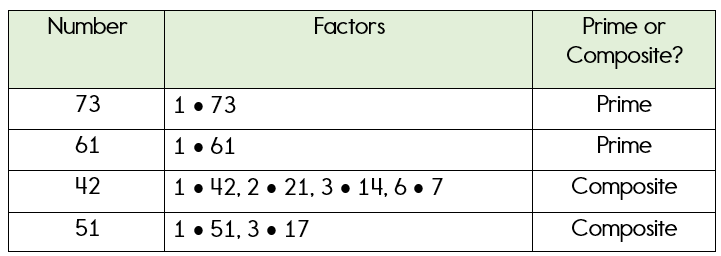Prime and Composite Numbers
As you've begun your study of factors, you've probably realized that some numbers have a lot of factors and others only have 1 and itself.
This realization leads us into our definitions of prime and composite numbers.
So, what are the definitions of prime and composite numbers? Take a look....
Prime Numbers
A prime number is a positive integer, greater than 1, whose only factors are 1 and itself.
Composite Numbers
A composite number is a positive integer, greater than 1, that has factors other than just 1 and itself.
Take a look at our chart for more examples.
Prime and Composite Numbers

Notice how prime numbers only have 1 and itself as its factors? The composite numbers have at least one other set of numbers as its factors.
Most people are able to quickly identify the prime numbers up to 50. It's not a bad idea to commit this list to memory. The following are the prime numbers from 0-50.
Prime Numbers to 50
2, 3, 5, 7, 11, 13, 17, 19, 23, 29, 31, 37, 41, 43, 47
Ok.. there was a lot of vocabulary introduced in this chapter and it is all very important.
Make sure that you have a clear understanding of factors, common factors, prime numbers, and composite numbers before moving on.
The next lesson in this series is Identifying the Greatest Common Factor (GCF).

Need More Help With Your Algebra Studies?
Get access to hundreds of video examples and practice problems with your subscription!
Click here for more information on our affordable subscription options.
Not ready to subscribe? Register for our FREE Pre-Algebra Refresher course.





Comments
We would love to hear what you have to say about this page!